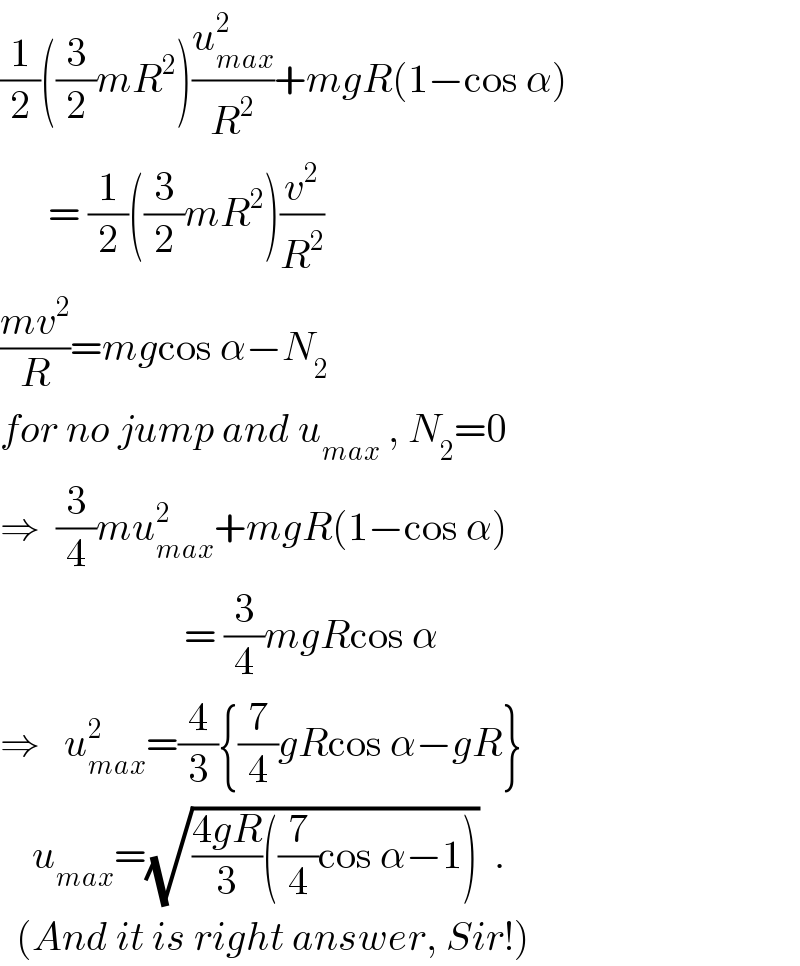
Question and Answers Forum
Question Number 88623 by ajfour last updated on 11/Apr/20

Commented by ajfour last updated on 11/Apr/20

Commented by mr W last updated on 13/Apr/20

Commented by Zainal Arifin last updated on 13/Apr/20

Commented by Zainal Arifin last updated on 14/Apr/20

Answered by mr W last updated on 12/Apr/20

Answered by ajfour last updated on 12/Apr/20

Commented by ajfour last updated on 12/Apr/20

Commented by mr W last updated on 12/Apr/20

